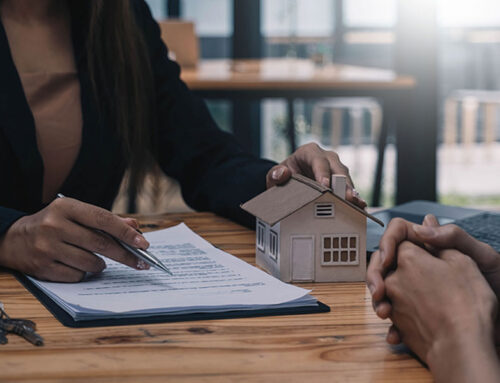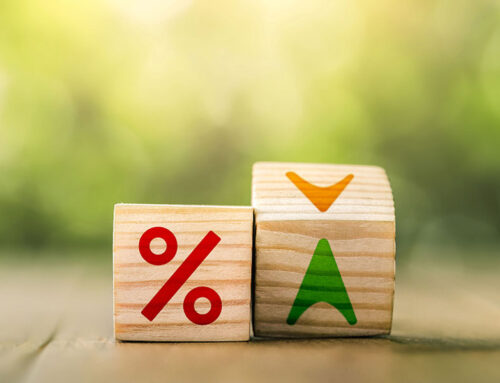When people are weighing the pros and cons of investing in real estate, they usually look at one of two numbers. There are people who look at what they can sell a house for and see money coming into their account, and people who think of the cost of buying a house and see money leaving their account.
Both sides have a point, but they miss an important number in the middle: the average cost to flip a small house.
Your profit margin (or lack of profit) is determined by the amount you spend flipping the house. And that means taking a lot of factors into account, from the actual physical work you do to the time it takes to do it to how long it takes you to sell. Figuring out your costs of flipping is hard work, but it’s the work you need to do to give yourself the best chance at success.
What Is the Average Cost of Flipping a Small House?
To determine the average cost of flipping a small house, you must consider a few factors.
The Cost of the House Itself
This is obviously your biggest expense and the one that is your driving factor. If you are planning to make an offer on a distressed house, for example, you have to make an offer that is reasonable and fair to the seller. You want to beat the competition but you don’t want to overpay. But what does it mean to overpay?
The offer is where you start figuring out your costs. Calculate the after-repair value (ARV) which is, in theory, how much you can sell your house for. A good rule is that you should offer about 70% of the home’s ARV, minus your rehab costs, in order to turn a good profit.
| Pro Tip: Remember the Closing Costs
As a buyer, these include the cost of mortgage insurance, homeowner’s insurance, appraisal fees, and property taxes. That’s about 5% of the total cost of the house, so make sure you take that into account. If you are paying $10,000 in closing costs and didn’t calculate that into your potential profit margin, that’s money you are losing. |
The Cost of Rehabbing the House
You’ve looked around the house. You’ve done an inspection. You see that work needs to be done on the floors, general maintenance outside, and maybe the kitchen and bathroom need to be spruced up. You may consider updating the lighting, adding an in-law suite, and maybe even a wet bar.
When you start to plan the rehab portion of your flip, the costs can really add up. That’s why it is important to have a plan.
Here are a few questions you should ask yourself when planning:
- What needs to be done in order to make the house liveable and marketable?
- What additional work can I do to make this house more attractive to a buyer?
- How much work do I need to do to compete with other houses in this market?
The third question is often overlooked. There are people who put very little work into a house in a good neighborhood and expect to get prices commensurate with the high prices around them, even though the buyer will still have to do a lot of fixing. Then there are people who put an enormous amount of work to turn a run-down into a luxury dream house in a neighborhood where no one can afford it (and those who can afford it don’t want to live there).
The point is that there is no one set level of rehab that is going to make any house successful. You have to do the work to make it a safe, clean, working house where people can live. The market dictates anything above and beyond that.
Remember that you will be spending money on all the equipment, parts, and appliances to rehab the house. You are also probably going to have to pay contractors. These costs add up. Make sure they are all in your calculations.
| Pro Tip: Never Underestimate Rehab Costs
You know that flooring work you were going to do? Turns out the underside of the wood is rotted. These things happen. There is almost always going to be an unexpected cost. This can make you change your plans to fit your schedule, or it can break your schedule. Either way, you have to be prepared for the unexpected. |
Holding Costs
What’s that, you say? You can do the rehab on your own without paying contractors? That’s great; it’s a plus to have those skills. But remember that you are going to be spending more money the longer it takes to rehab. These are known as holding costs.
Holding costs might be the X-factor in rehabs, since not enough people take them into account. Some of these costs include:
- Vacant property insurance: Regular homeowner insurance doesn’t usually cover a property if it is vacant for more than 30 days, but it is important to get this insurance since vacant properties are prone to vandalism and damage. This is usually around 50% more than the cost of regular insurance.
- Utilities: Your contractors are going to want running water and electricity in order to do the job, which I think is reasonable. That means you are going to be paying those bills. These usually aren’t too bad in a small house, but they are real costs.
- Property tax: This might be taken care of in closing (and might even be lumped into your loan), but you are going to have to pay taxes on the property. You will generally pre-pay for the rest of the calendar year, and then every six months after that.
- Financing loans: Chances are you obtained real estate investment financing. These loans, and the interest, will need to be paid off soon. The longer it takes, the more the payments grow.
So all of this adds up to wanting to sell quickly.
| Pro-tip: Don’t Try To Game the System
You’ll see a lot of people recommend that you should live in your house while rehabbing it. That way you aren’t paying the vacant insurance, you aren’t paying utilities on multiple properties, etc. But that’s not always a great idea. It actually tends to make rehab go longer, and lengthens the time before selling. And also, your house is then a work zone. It can be stressful. |
The Best Way To Understand Your Average Cost
When it comes to flipping a house, the goal is to make a profit. If you build a million-dollar house that sells for $1,005,000, you’ve made less money than if you sell a $200,000 house for $230,000. The point isn’t to rehab a house that can sell for the absolute most money, but one that you can earn the most from. That varies from area to area and project to project. That’s why it is great to have the valuation tools that come with investing in an independently owned and operated HomeVestors® franchise.
If you are a franchisee, like I am, you get access to proprietary valuation tools that help you calculate ARV based on the area, the market, and the amount of rehab you have to do. These tools help you understand if it is worth it to buy a small house, and how much you will need to spend to make a profit. Obviously, there are always surprises, but having tools is a far better way of running your business than just guessing.
If you’re considering flipping houses smartly, request information about becoming a franchisee today.
Each franchise office is independently owned and operated.
Contact
"*" indicates required fields






